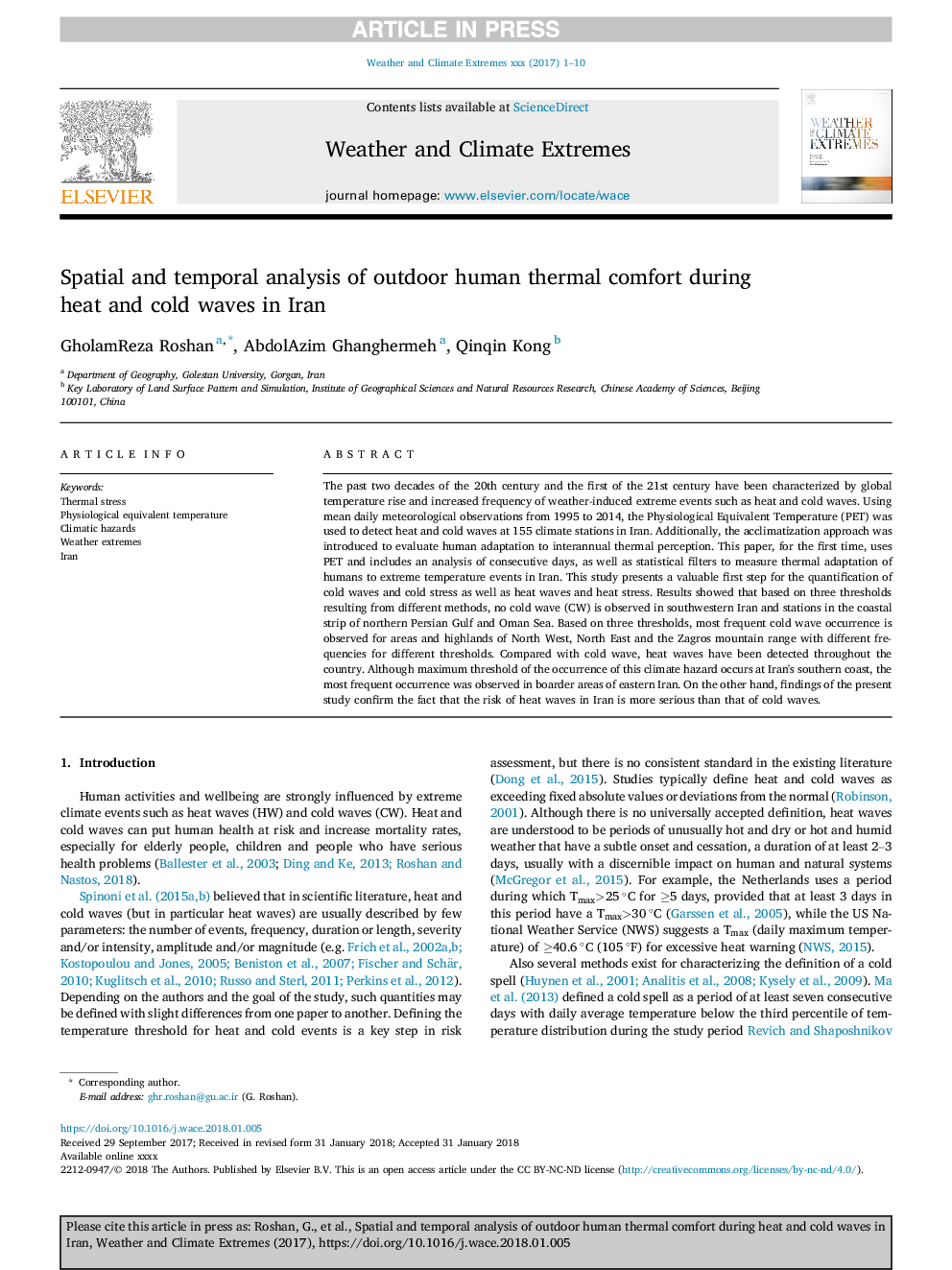| کد مقاله | کد نشریه | سال انتشار | مقاله انگلیسی | نسخه تمام متن |
|---|---|---|---|---|
| 7501265 | 1485938 | 2018 | 10 صفحه PDF | دانلود رایگان |
عنوان انگلیسی مقاله ISI
Spatial and temporal analysis of outdoor human thermal comfort during heat and cold waves in Iran
ترجمه فارسی عنوان
تجزیه و تحلیل فضایی و زمانی از راحتی حرارتی انسان در طول امواج گرما و سرما در ایران
دانلود مقاله + سفارش ترجمه
دانلود مقاله ISI انگلیسی
رایگان برای ایرانیان
کلمات کلیدی
استرس حرارتی، دمای معادل فیزیولوژیکی، خطرات آب و هوایی، کمبود آب و هوا، ایران،
موضوعات مرتبط
مهندسی و علوم پایه
علوم زمین و سیارات
علم هواشناسی
چکیده انگلیسی
The past two decades of the 20th century and the first of the 21st century have been characterized by global temperature rise and increased frequency of weather-induced extreme events such as heat and cold waves. Using mean daily meteorological observations from 1995 to 2014, the Physiological Equivalent Temperature (PET) was used to detect heat and cold waves at 155 climate stations in Iran. Additionally, the acclimatization approach was introduced to evaluate human adaptation to interannual thermal perception. This paper, for the first time, uses PET and includes an analysis of consecutive days, as well as statistical filters to measure thermal adaptation of humans to extreme temperature events in Iran. This study presents a valuable first step for the quantification of cold waves and cold stress as well as heat waves and heat stress. Results showed that based on three thresholds resulting from different methods, no cold wave (CW) is observed in southwestern Iran and stations in the coastal strip of northern Persian Gulf and Oman Sea. Based on three thresholds, most frequent cold wave occurrence is observed for areas and highlands of North West, North East and the Zagros mountain range with different frequencies for different thresholds. Compared with cold wave, heat waves have been detected throughout the country. Although maximum threshold of the occurrence of this climate hazard occurs at Iran's southern coast, the most frequent occurrence was observed in boarder areas of eastern Iran. On the other hand, findings of the present study confirm the fact that the risk of heat waves in Iran is more serious than that of cold waves.
ناشر
Database: Elsevier - ScienceDirect (ساینس دایرکت)
Journal: Weather and Climate Extremes - Volume 19, March 2018, Pages 58-67
Journal: Weather and Climate Extremes - Volume 19, March 2018, Pages 58-67
نویسندگان
GholamReza Roshan, AbdolAzim Ghanghermeh, Qinqin Kong,
